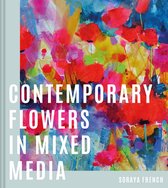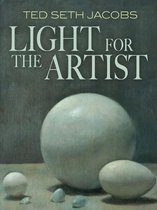Japan: A Record in Colour Ebook Tooltip Ebooks kunnen worden gelezen op uw computer en op daarvoor geschikte e-readers.
Afbeeldingen
Sla de afbeeldingen overArtikel vergelijken
- Engels
- E-book
- 9781465549372
- 24 februari 2021
- Adobe ePub
Samenvatting
ART AND THE DRAMA I always agree with that man who said, “Let me make the nation’s songs and I care not who frames her laws,” or words to that effect, for, in my opinion, nothing so well indicates national character or so keenly accentuates the difference between individuals and nations as the way in which they spend their leisure hours; and the theatres of Japan are thoroughly typical of the people’s character. It would be utterly impossible for the Japanese to keep art out of their lives. It creeps into everything, and is as the very air they breathe. Art with them is not only a conscious effort to achieve the beautiful, but also an instinctive expression of inherited taste. It beautifies their homes and pervades their gardens; and perhaps one never realises this all-dominating power more fully than when in a Japanese theatre, which is, invariably, a veritable temple of art. But here with us in the West it is different. We have no art, and our methods merely lead us to deception, while we do not begin to understand those few great truths which form the basis of oriental philosophy, and without which perfection in the dramatic art is impossible. For example, the philosophy of balance, of which the Japanese are past masters, is to us unknown. The fact that Nature is commonplace, thereby forming a background, as it were, for Tragedy and the spirit of life to work, has never occurred to us; while the background of our Western play is not by any means a plan created by a true artist upon which to display the dramatic picture as it is in Japan, but simply a background to advertise the stage-manager’s imitative talent. The result is, of course, that the acting and the environment are at variance instead of being in harmonic unity. But we in the West have not time to think of vague things, such as balance and breadth and the creating of pictures. What we want is realism; we want a sky to look like a real sky, and the moon in it to look like a real moon, even if it travels by clock-work, as it has been known to do occasionally. And so real is this clock-work moon that we are deceived into imagining that it is the moon, the actual moon. But the deception is not pleasant; in fact, it almost gives you indigestion to see a moon, and such a moon, careering over the whole sky in half an hour. In Japan they would not occupy themselves with making you believe that a moon on the stage was a real one—they would consider such false realism as a bit of gross degradation—but they would take the greatest possible pains as to the proper placing of that palpably pasteboard moon of theirs, even if they had to hold it up in the sky by the aid of a broom-stick. WATCHING THE PLAY In Japan the scenic work of a play is handled by one man alone, and that man is the dramatic author, who is almost invariably a great artist. To him the stage is a huge canvas upon which he is to paint his picture, and of which each actor forms a component part. This picture of his has to be thought out in every detail; he has to think of his figures in relation to his background, just as a Japanese architect when building a house or a temple takes into consideration the surrounding scenery, and even the trees and the hills, in order to form a complete picture, perfect in balance and in form. When a dramatic author places his drama upon the stage, he arranges the colour and setting of it in obedience to his ideas of fitness, which are partly intuitive and partly traditional. It is probably necessary that his background should be a monotone, or arranged in broad masses of colour, in order to balance the brilliancy of the action, and against which the moving figures are sharply defined. And it is only in Japan that you see such brilliant luminous effects on the stage, for the Japs alone seem to have the courage to handle very vivid colours in a masterly way—glorious sweeps of gold and of blue—vivid, positive colour. No low-toned plush curtains and what we call rich, sombre colour, with overdressed, shifted-calved flunkeys, stepping silently about on velvet carpets, shod in list slippers, and looking for all the world like a lot of burglars, only needing a couple of dark lanterns to complete their stealthy appearance
Productspecificaties
Inhoud
- Taal
- en
- Bindwijze
- E-book
- Oorspronkelijke releasedatum
- 24 februari 2021
- Ebook Formaat
- Adobe ePub
- Illustraties
- Nee
Betrokkenen
- Hoofdauteur
- Dorothy Menpes
- Tweede Auteur
- Dorothy Menpes
- Hoofdillustrator
- Mortimer Menpes
- Hoofduitgeverij
- Library Of Alexandria
Lees mogelijkheden
- Lees dit ebook op
- Android (smartphone en tablet) | Kobo e-reader | Desktop (Mac en Windows) | iOS (smartphone en tablet) | Windows (smartphone en tablet)
Overige kenmerken
- Studieboek
- Nee
EAN
- EAN
- 9781465549372
Je vindt dit artikel in
- Categorieën
- Taal
- Engels
- Boek, ebook of luisterboek?
- Ebook
- Beschikbaarheid
- Leverbaar
- Beschikbaar in Kobo Plus
- Beschikbaar in Kobo Plus
Waarom een wereldbollabel?
Artikelen met een wereldbol bezitten positieve eigenschappen vergeleken met soortgelijke artikelen, zoals bepaalde keur- of kenmerken op sociaal en ecologisch gebied.
Keur- of kenmerken
-
Digitaal boek
Onafhankelijk onderzoek toont aan dat als je meer dan 25 ebooks downloadt, dit een lagere milieuimpact heeft dan van fysieke boeken.
Kies gewenste uitvoering
Prijsinformatie en bestellen
De prijs van dit product is 4 euro en 99 cent.- E-book is direct beschikbaar na aankoop
- E-books lezen is voordelig
- Dag en nacht klantenservice
- Veilig betalen
Rapporteer dit artikel
Je wilt melding doen van illegale inhoud over dit artikel:
- Ik wil melding doen als klant
- Ik wil melding doen als autoriteit of trusted flagger
- Ik wil melding doen als partner
- Ik wil melding doen als merkhouder
Geen klant, autoriteit, trusted flagger, merkhouder of partner? Gebruik dan onderstaande link om melding te doen.








